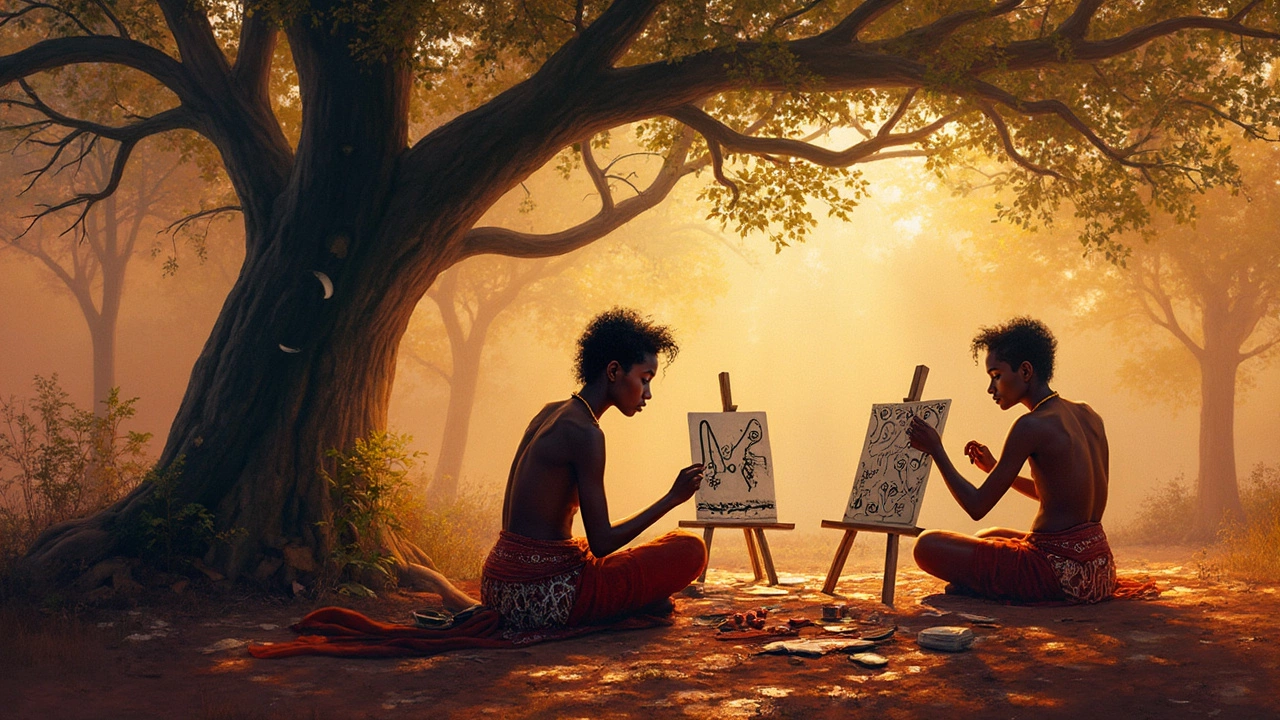Indian Painting: Simple Guide to History, Styles & How to Enjoy Them
If you’re curious about the colorful world of Indian painting, you’re in the right place. From ancient cave walls to modern galleries, Indian art is a mix of stories, religion, and everyday life. In this guide we’ll walk through the big moments, the most popular styles, and give you easy tips on where to see and collect these works.
A Quick Look at the History of Indian Painting
Indian painting started over 2,000 years ago on stone walls of Buddhist caves like Ajanta. Those early frescoes show monks, nature and myth in bold, flat colors. Later, between the 12th and 16th centuries, royal courts in Delhi, Jaipur and Mysore invited artists to create mini‑atures that decorated manuscripts. These court paintings used fine brushes and gold leaf, giving a peek into royal life. The British colonial period introduced new subjects and techniques, and after independence a wave of folk and modern artists brought fresh ideas while still honoring traditional themes.
Main Styles You’ll Meet in Indian Art
Madhubani comes from Bihar’s Mithila region. Artists use bright pigments made from plants and create intricate geometric borders. The paintings often show deities, weddings or nature scenes. Warli comes from Maharashtra’s tribal communities. It’s done with white chalk on a mud base and uses simple stick figures to tell daily life stories. Pattachitra, found in Odisha and West Bengal, features mythological themes painted on cloth or palm leaves with natural colors. Mughal miniatures are tiny, detailed works that blend Persian style with Indian themes—think tiny battles, court scenes, and delicate floral borders. Rajput paintings are bold and dramatic, focusing on heroic tales, hunting scenes and grand architecture, usually done on paper with vivid pigments.
Each style follows its own set of rules for color, line and subject. For example, Madhubani never uses black ink; everything is made from colored earth, turmeric or indigo. Warli artists keep their figures simple—no shading, just clear outlines. Knowing these basics helps you spot authentic pieces when you’re browsing a market or museum.
Where can you actually see Indian paintings? Major museums like the National Museum in New Delhi, the Victoria and Albert Museum in London, and the Metropolitan Museum in New York have permanent collections. Smaller galleries across India—such as the Kalakriti Art Gallery in Jaipur or the Gagan Kala Bhavan in Kolkata—show folk works and contemporary takes on traditional themes. Don’t forget street fairs and craft markets; they’re great for meeting the artists behind the work.
If you’re thinking about buying a painting, start by asking where the pigments came from and how the piece was made. Authentic folk art often uses natural dyes and is signed with the artist’s name or village. Ask for a small certificate or at least a written note from the seller describing the medium. Keep the painting away from direct sunlight and humidity; a soft cloth and a stable wall temperature will preserve the colors for years.
Bottom line: Indian painting is a living tradition that mixes ancient stories with modern life. By learning a few key facts about history and style, you’ll enjoy the art more, whether you’re strolling through a museum or picking a piece for your home.
